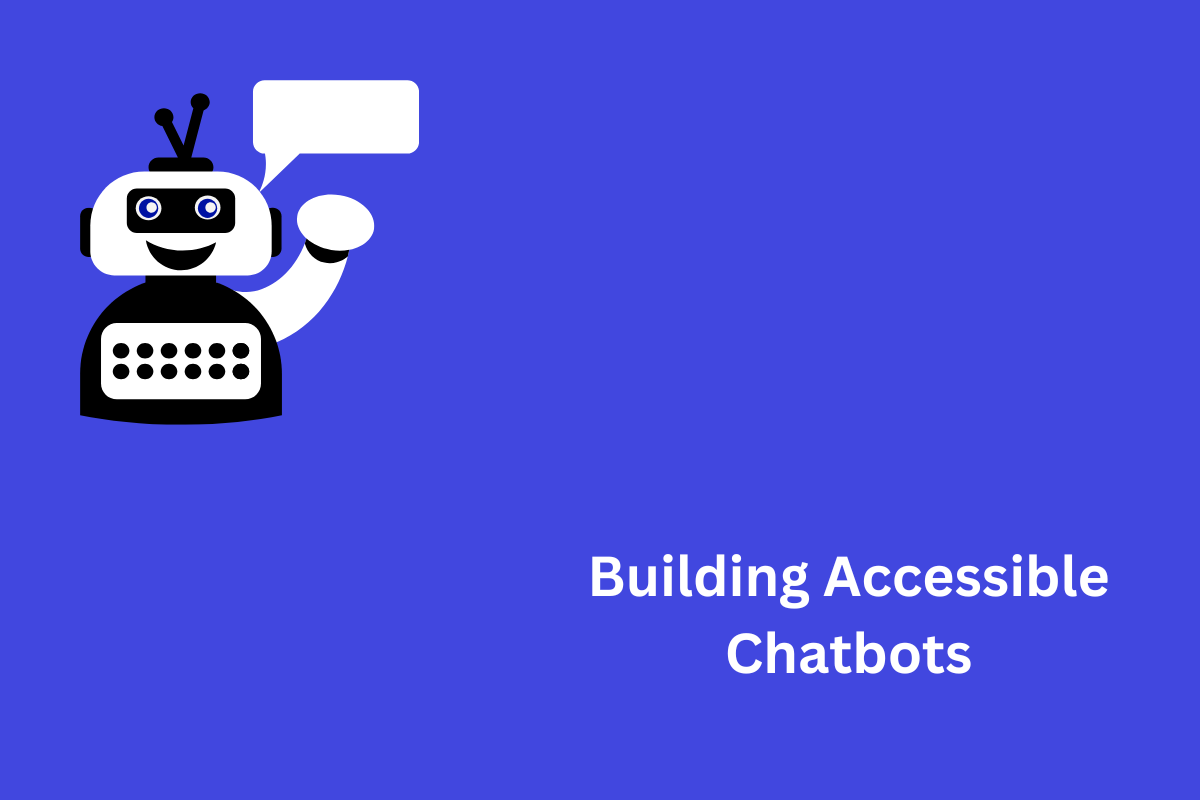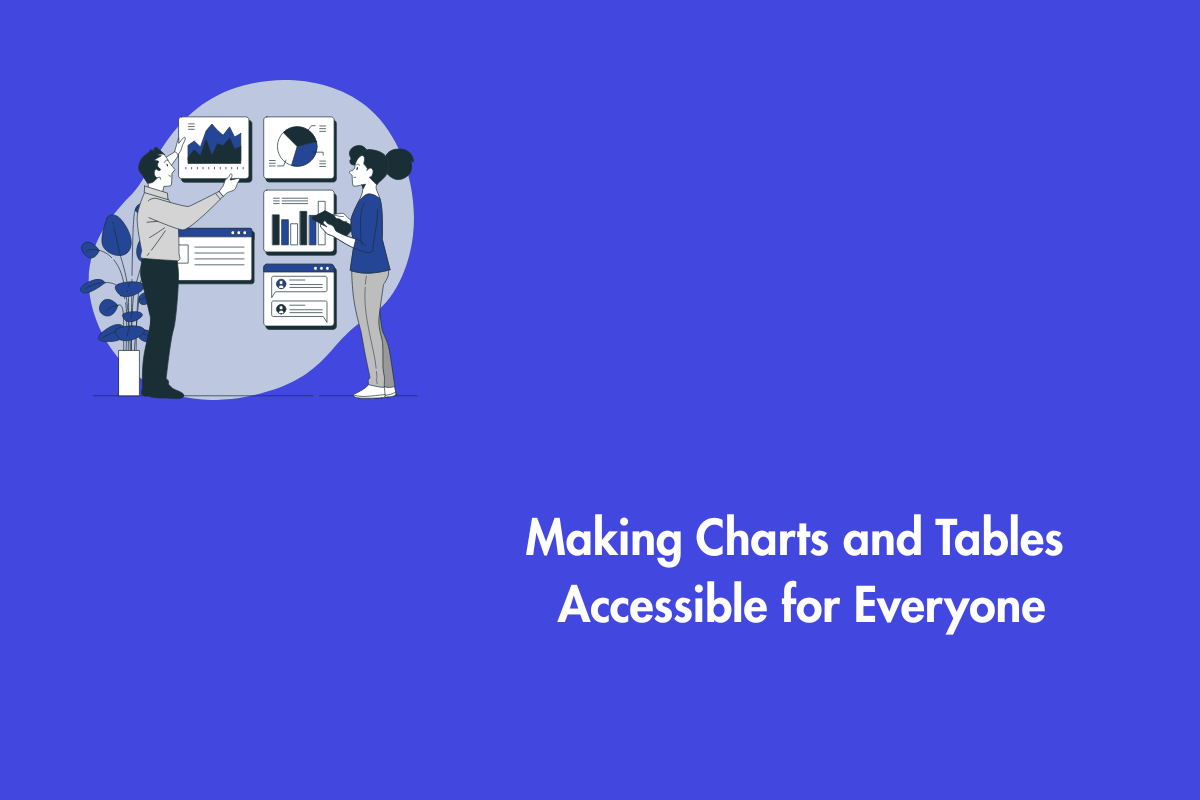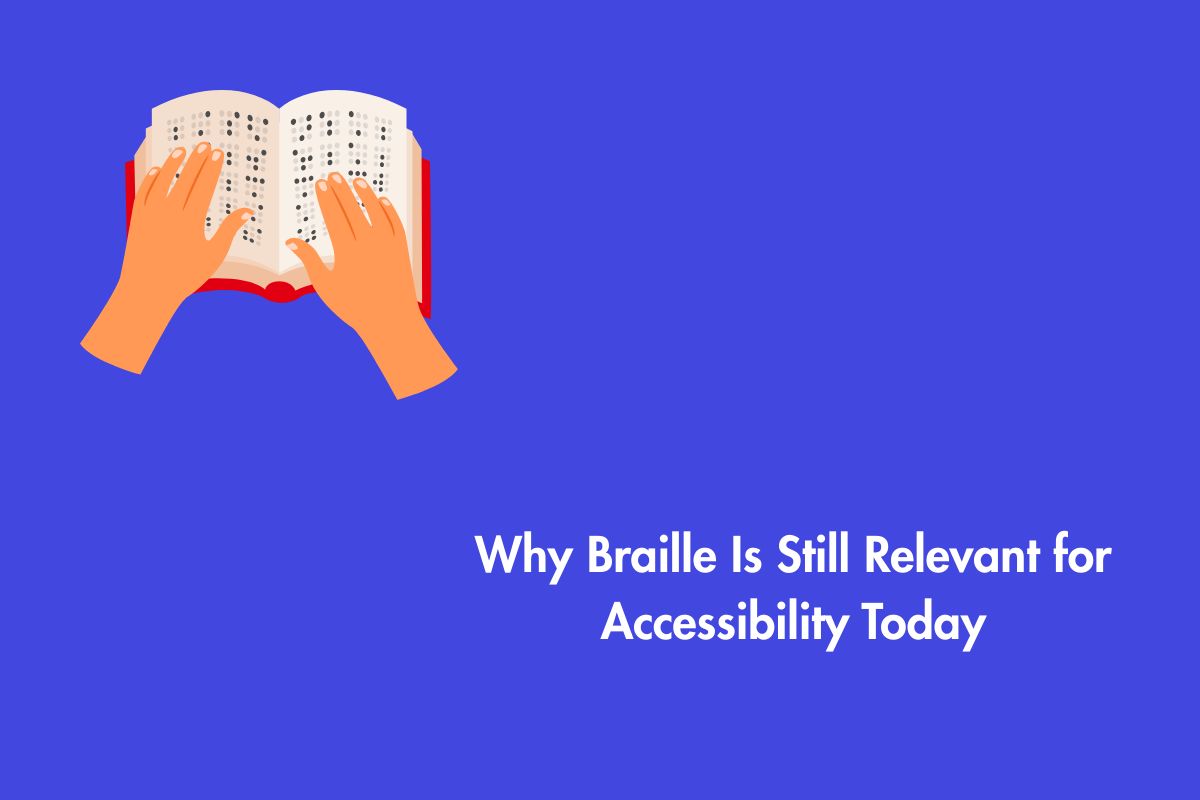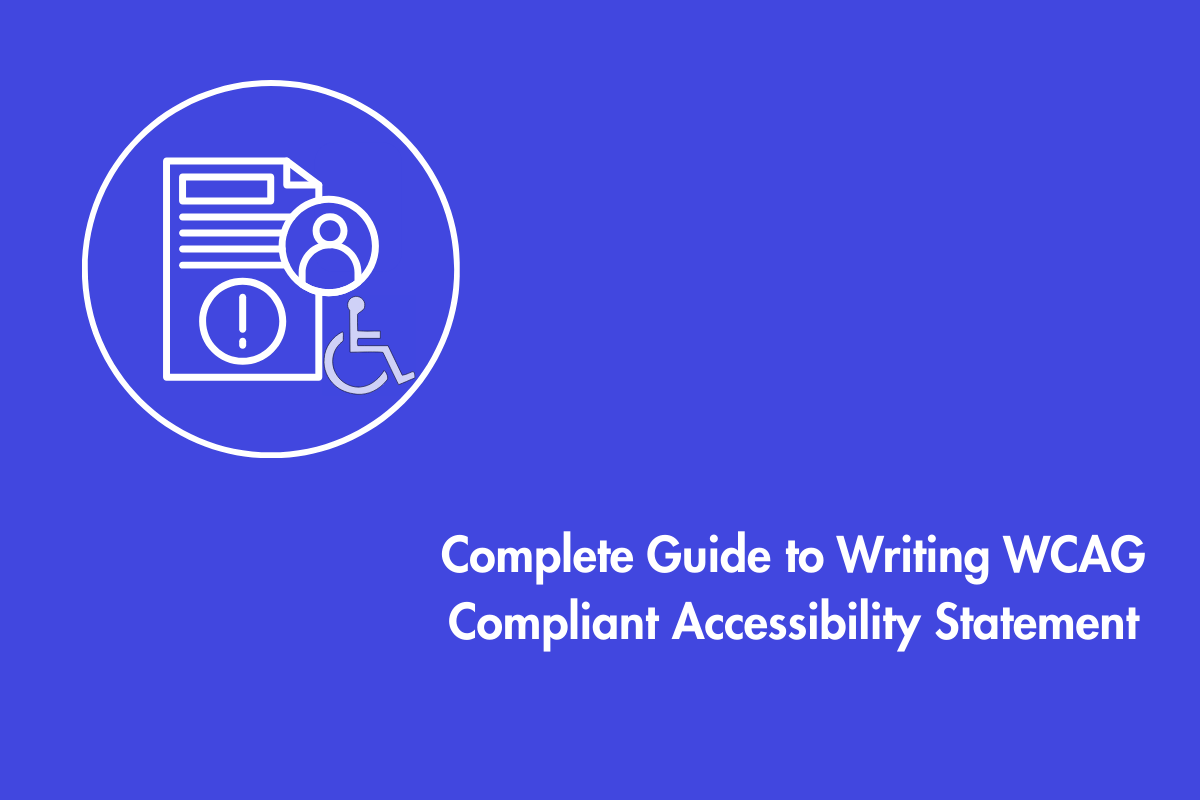Nowadays, almost all websites feature chatbots because they efficiently communicate information, handle simple tasks, and assist users quickly and conveniently, but knowing how to build accessible chatbots is key to ensuring everyone, including users with disabilities, can benefit. Chatbots are beneficial to both users and organizations, so it is essential that it is accessible to all users. In this blog, we will explore various topics such as accessibility challenges, benefits, and other topics associated with chatbots.
Table of Contents
What are Chatbots?
Chatbots are computer programs designed to replicate human interactions. Specifically, they use text or speech to respond to questions, offer information, or complete specialized activities. Moreover, they find applications on websites, messaging apps, and voice assistants, among other platforms. Consequently, their capacity to provide quick service, automate tedious operations, and tailor user experiences drives their rise. In addition, chatbots can handle numerous inquiries simultaneously, thereby guaranteeing 24/7 availability and allowing human agents to focus on complex issues.
Types of Chatbots:
There are six main types of chatbots: menu-based, rule-based, AI-powered, voice, generative AI, and hybrid.
- Menu and rule-based bots use predefined options and logic to guide users, but struggle with complex queries.
- AI-powered chatbots use natural language understanding and machine learning to respond intelligently and improve over time.
- Voice chatbots use speech recognition and NLP for real-time spoken interactions.
- Generative AI bots can create original content like text or images, enhancing personalization.
- Hybrid bots combine rule-based and AI elements for flexible functionality.
The right choice depends on business size, goals, user expectations, and whether simplicity or advanced interaction is needed.
Benefits of Chatbots for Users with Disabilities
Chatbots drive lead generation and deliver personalized user experiences. However, these benefits should be accessible to all users, regardless of how they interact with the chatbot. Designing or investing in accessible chatbots ensures that your online presence is inclusive, welcoming, and usable for everyone. Here are some benefits for people with disabilities:
1. Users with Visual Impairments
- Using chatbots that are compatible with screen readers can provide users with information without relying on visual interfaces.
- Voice-enabled chatbots provide hands-free and visual-free communication.
- These chatbots enhance access to online services, information, and social interaction.
2. User with Hearing Impairments
- Provides clear, direct communication compared to voice-only interfaces.
- Effective interactions with well-structured text, clear language, and conversation history review.
- They support tasks like answering questions, providing information, and completing transactions.
- Eliminate dependency on phone calls or audio instructions.
3. Users with Motor Impairments
- Chatbots offer accessible interfaces through keyboard navigation and alternative input methods.
- Supports keyboard navigation and alternative input methods.
- Empowers users with limited mobility to access information and services online.
- Voice-based interaction allows users with limited dexterity to navigate chatbots.
4. Users with Cognitive Impairments
- Clear language, detailed instructions, and the the ability to repeat or rephrase messages improve comprehension helps users with cognitive impairments.
- Chatbots can break complex tasks into smaller, manageable steps to reduce cognitive load.
- Usability features such as visual cues, consistent navigation, and avoidance of technical jargon enhance the user experience.
Challenges and Solutions for Accessibility of Chatbots
Individuals with disabilities frequently encounter considerable difficulties when using chatbots that lack proper design. Achieving genuinely inclusive digital experiences requires careful attention to these challenges. Specifically, by designing chatbots with accessibility in mind, we can remove common barriers and empower users with disabilities. Furthermore, below are a few challenges and solutions for improving accessibility in chatbots.
Accessibility Challenges of Chatbots:
1. Visual Impairments:
Many chatbots lack compatibility with screen readers and fail to provide alternative text for images, icons, or emojis, making them inaccessible to blind or low-vision users. Relying solely on color to convey information is a disadvantage to users with color blindness.
2. Auditory Impairments:
Chatbots that depend on audio cues or voice interactions, without providing text-based alternatives, exclude users who are deaf or hard of hearing.
3. Cognitive and Neurological Impairments:
Overly complex chatbot interfaces, unclear instructions, or inconsistent interactions can overwhelm or confuse users with cognitive or neurological disabilities, reducing usability and comprehension.
4. Motor Impairments:
Chatbots that require quick responses or precise mouse movements may be difficult for users with limited motor control. Poor keyboard navigation and a lack of voice input support further creates a barrier in accessibility.
Other Accessibility Challenges
Lack of Semantic Markup:
Missing appropriate semantic HTML or ARIA labels can hinder screen reader navigation and reduce overall usability for assistive technology users.
Non-Standard UI Elements:
Custom or unconventional interface components that don’t follow established accessibility standards can confuse users or be unusable with assistive tools.
Limited Personalization:
Inability to adjust visual settings—such as font size, contrast, or layout—can create barriers for users with visual or cognitive impairments who need tailored interfaces.
Inconsistent Interaction Patterns:
Unpredictable or erratic chatbot behaviors can disorient users with cognitive disabilities or those relying on assistive technologies for consistent navigation and understanding.
Accessibility Solutions of Chatbots:
1. Visual Accessibility
Screen Reader Support: Ensure the chatbot is compatible with screen readers by using semantic HTML elements and appropriate ARIA roles.
Alt Text for Visual Elements: Provide descriptive alternative text for all images, icons, and emojis to support users with visual impairments.
High Contrast & Customization: Use high-contrast color schemes and allow users to customize visual elements. Ensure text and background combinations meet WCAG minimum contrast ratio standards.
2. Auditory Accessibility
Text Alternatives for Audio: Offer written alternatives for all audio content, such as voice responses and alerts.
Visual Indicators for Alerts: Use on-screen notifications and visual cues to inform users of new messages or changes in chatbot status, supporting users who are deaf or hard of hearing.
3. Motor Accessibility
Full Keyboard Navigation: Design the chatbot to be fully operable via keyboard. Use proper focus management to guide users through the interface efficiently.
Voice Command Integration: Incorporate voice control features to enable users with limited motor function to interact with the chatbot using speech.
4. Cognitive Accessibility
Clear Language and Instructions: Use plain, easy-to-understand language and provide straightforward instructions.
Predictable Interactions: Maintain consistent and logical chatbot behaviour to prevent confusion, especially for users with cognitive or neurological impairments.
5. Universal Design Features
Multiple Input Modes: Support various interaction methods—including text, touch, and voice—to accommodate diverse user preferences and abilities.
Customizable Interface Settings: Allow users to adjust text size, font type, contrast levels, and speech speed to suit their individual needs.
6. Testing and Feedback
Inclusive Usability Testing: Involve users with disabilities in the design and testing process to ensure the chatbot is accessible to all. Gather real feedback from a diverse user base.
Accessibility Evaluation Tools: Use a combination of automated tools and manual testing to verify compliance with standards like WCAG.
7. Looking Ahead
Developers are increasingly embracing universal design principles to ensure chatbot interfaces are inclusive by default. At the same time, evolving accessibility regulations are pushing companies to meet higher standards, encouraging innovation and best practices.
As AI agents grow more capable of navigating the web and making decisions on behalf of users, accessibility takes on a new layer of importance. Just as SEO helped websites become discoverable by search engines, AIO (Artificial Intelligence Optimization) is about structuring content in ways machines can easily understand.
Websites that follow WCAG standards and use clean, semantic code are not only more user-friendly—they’re also more AI-friendly. In a future where many interactions may be mediated by intelligent agents, accessible design will be essential not just for human users, but for the systems acting in their place.
Conclusion
Many websites now use chatbots to deliver quick information and support, offering 24/7 assistance. For individuals with disabilities, chatbots can improve digital accessibility in various ways, such as supporting screen readers and voice commands, providing clear text communication for users with hearing or mobility challenges, enabling keyboard navigation and voice input for those with motor impairments, and simplifying tasks for users with cognitive difficulties.
Despite these benefits, certain design choices like strict time limits, visual-only cues, and mouse-dependent navigation can create significant barriers. To improve accessibility, developers should implement features like full keyboard operability, semantic HTML for screen reader support, flexible response times, and straightforward, easy-to-understand language.
Hopefully, our blog helps you to take the necessary actions to make your Chatbots accessible. Being accessible will always help you in the long run by enabling all users to access your website easily. Check out the homegrown Accessibility checker and get your free report today.



